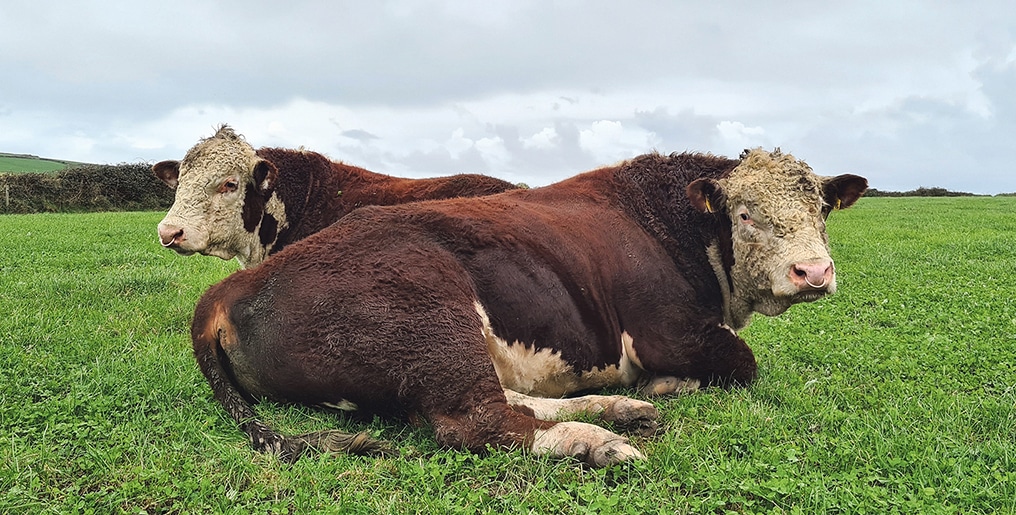The clocks may have gone back an hour but in a lot of West Cork farmyards it feels like they’ve jumped forward by a month. Not just locally, but across the country, livestock have been housed earlier than usual because of the weather – the ground is saturated.
For most of October two thirds of cattle were housed. I’d expect the like of that from maybe late October or the middle of November but never this early. The monthly bale count will be starting a little earlier than usual in order to make sure there will be enough fodder stocks to get through to next spring. I’ve never usually had an issue with it, but it’s not something I take for granted either. Silage that was baled wet, tends to have a lower dry matter content so, while you think you may have enough bales in stock, cattle will need to eat more in order to get their dry matter content. What goes in must come out, so slurry levels will have to be watched too. With stock in earlier, there’s a chance tanks could come under pressure too. There’s no shortage of stuff to keep you on your toes when you’re involved in farming.
With two days to go in October, the weather station on Sherkin had recorded 179mm; that put the total for the period from July to now at 573mm. That means that the rain that fell in the last four months is almost half the longterm average rain fall figures recorded in our local weather station. To think there were people looking for a drop of rain back in June. It’s been relentless!
Just like March and April, everyone is hoping for a spell of dry weather but it just keeps raining. I’m sure I wasn’t the only one that kept looking at the weather apps searching for a dry week. Unlike early in the year there is less chance of ground drying out either. Daylight is shortening so the opportunity for the sun to dry out ground isn’t there in the same way it is in April and May. It can be mentally draining but there’s no controlling the weather and perhaps we’re lucky that is the case. Can you imagine how impossible it would be to please everyone if we did?
For now, I’ve accepted that the effective grazing season is over. It’s been a grazing season where you had to pull out almost all the tricks to manage the wet conditions and some that you generally wouldn’t consider. At its close, cattle were put in smaller groups or let run over a larger area than usual just to get covers graze and keep damage to ground at a minimum.
I’ve found having too much of a grass-cover in winter can be a liability, as salt blown in by the wind flattens and burns the grass, leaving you with nothing. While it has been wet, temperatures have remained in the low teens and higher on occasion meaning grass has continued to grow to set the farm up right for next years grazing, a portion of that will have to be grazed off.

Stock bulls
In some paddocks there is far too much grass to leave it over the winter so when we do get a settled dry spell, the plan is to leave out a small group of cows in both yards, just to get things under control. I had planned on keeping the stock bulls out this winter too.
In preparation for this, the pair had their introductions lately. It was a gradual process. The week of TB testing they were in the shed and got to know each other vocally from across the feed passage. Thankfully the TB test was clear, so the ‘getting to know you’ process continued outdoors. They were put in paddocks close to each other for a while before being let in together. Initially they surprised me, as they just stood there for 20 minutes sizing each other up but not being too bothered. I was proven wrong and for the next few hours they were belting each other around a field. The next day was when we had almost three inches of rain and the pair of heroes were tucked into the ditch at opposite corners of the field. The following morning, they had put their differences aside and were grazing peacefully alongside each other.
It’s been a few years since I had a pair of older bulls together but it was a regular part of the winter routine here. If there’s one bigger than the other, the decision of ‘who is boss’ is settled quickly, but in this scenario, the two weigh about one ton each. A lot can go wrong when mixing senior bulls so that’s why it was better to take my time introducing them. For the next few months they will be on a mini tour of the farm cleaning up paddocks and hopefully the peace will continue.



